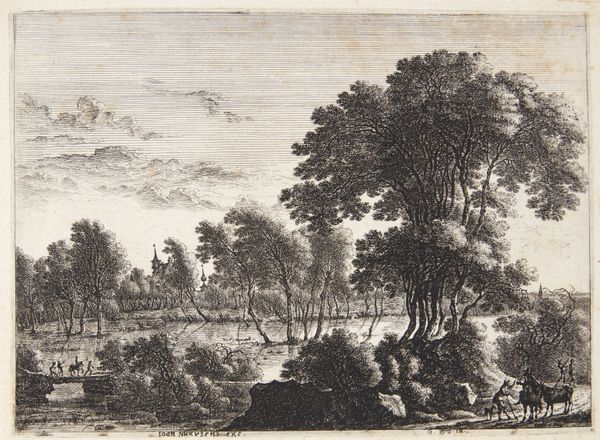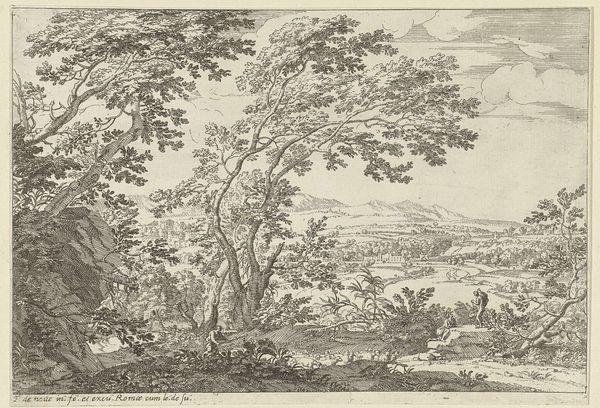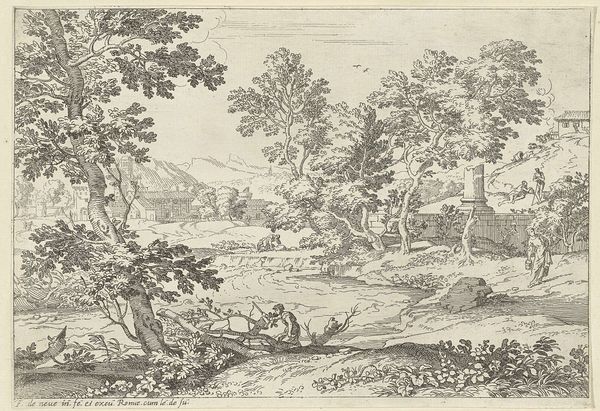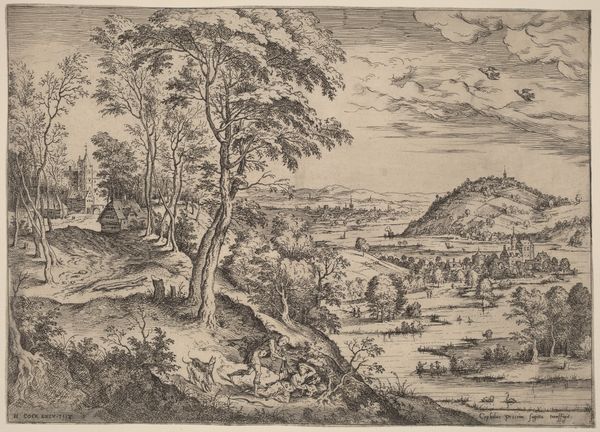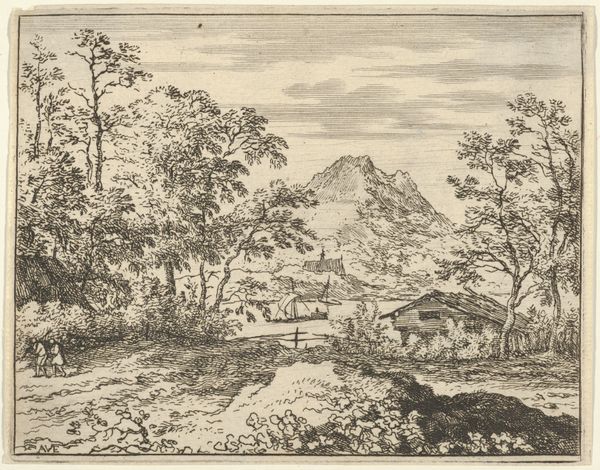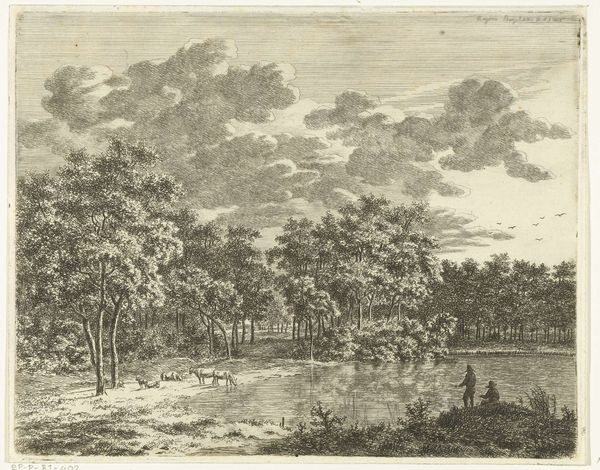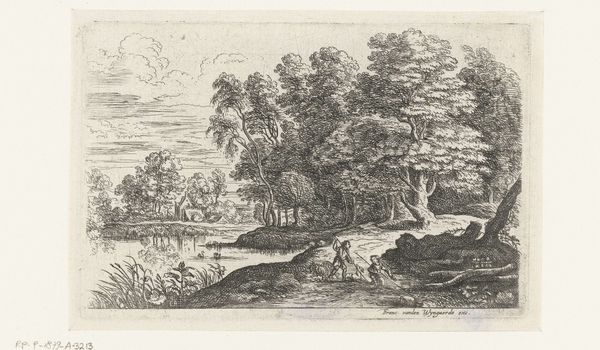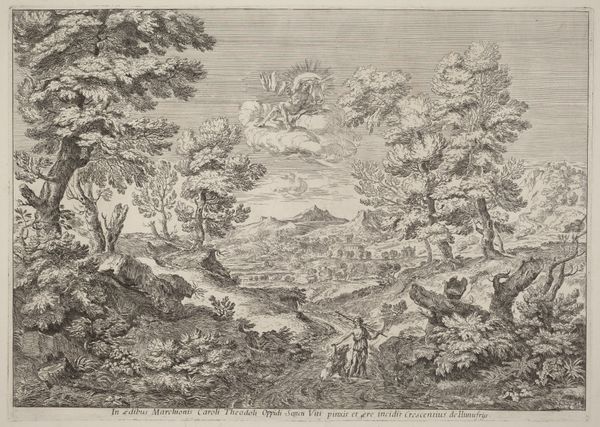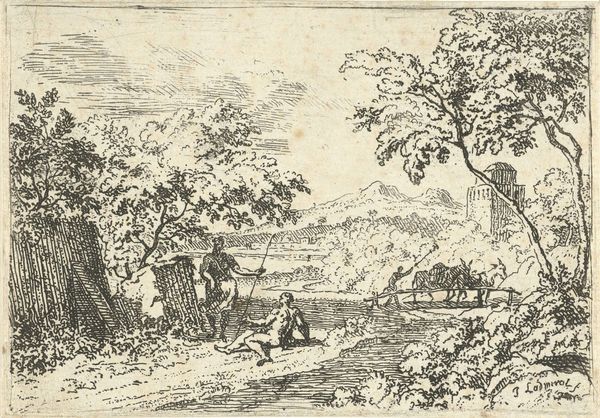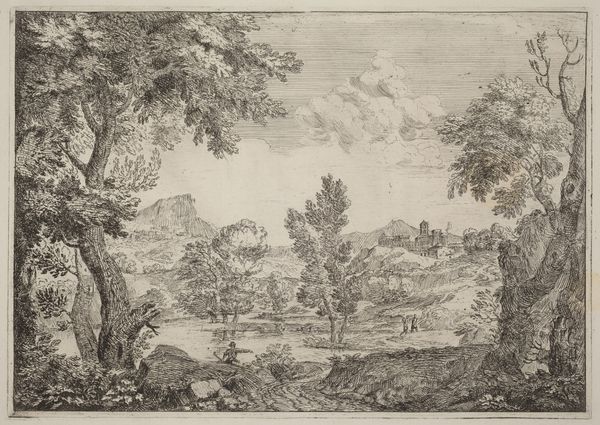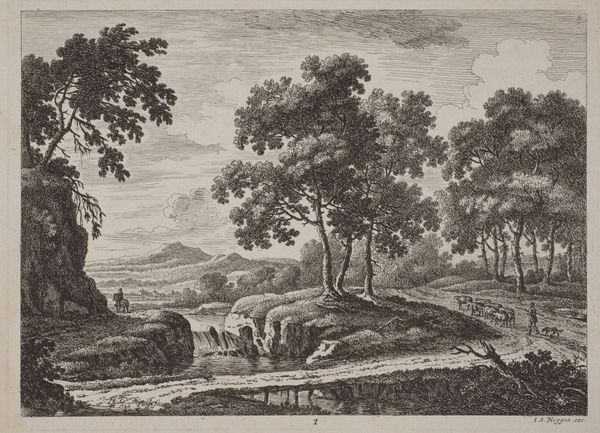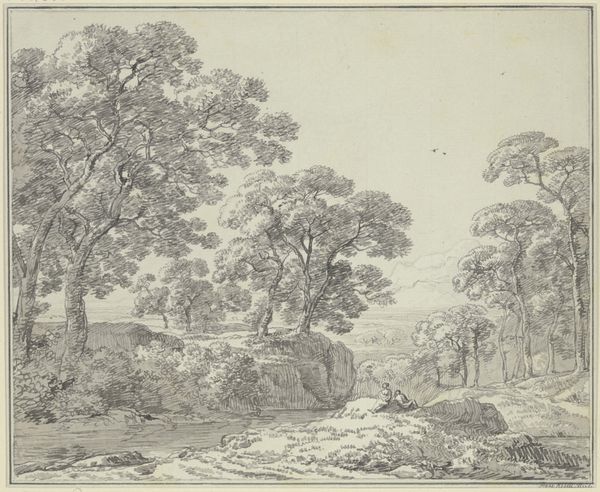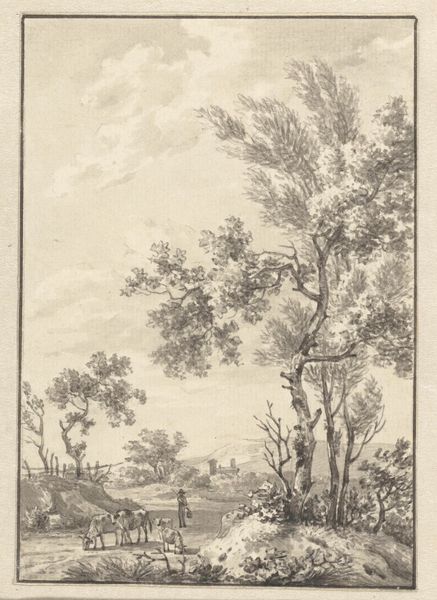
drawing, etching, engraving
#
drawing
#
baroque
#
etching
#
landscape
#
line
#
engraving
Dimensions: height 105 mm, width 158 mm
Copyright: Rijks Museum: Open Domain
Editor: Here we have "Landscape with Mule Driver," created sometime between 1637 and 1656 by Cornelis Matthieu, rendered in etching and engraving. The lines are so delicate! What strikes me is the overwhelming sense of…everyday life. It feels very un-heroic, somehow. How do you see this piece? Curator: It’s interesting you say that. Think about the social context. Landscapes, especially in print form, became increasingly popular among the rising merchant class in the Dutch Golden Age. What could this scene of a mule driver suggest to them? Editor: Well, they were definitely trading a lot with pack animals! But surely they aspired to something more…romantic? This feels quite…pedestrian. Curator: Exactly! This wasn’t about idealized nature, but rather an appreciation for the Dutch countryside that was connected with trade and daily life. It visualizes something accessible. A kind of relatable pastoral imagery became desirable, perhaps indicating a new perspective on work and status. Do you see any indication of prosperity, perhaps in the landscape itself? Editor: Hmmm...I guess the relatively clear path and well-maintained trees do imply a level of societal stability? The whole landscape appears quite…managed. Curator: Precisely. This “managed” aspect is very Dutch, and indicates control, which itself connects to power and privilege. And did prints have any role in wider society at this time? Editor: I suppose it gave people who wouldn't normally see fine art access. By democratizing imagery it granted common people the opportunity to express wealth. Curator: An incisive thought; thank you. Considering how images like these reflected and reinforced emerging societal values, do you see how "un-heroic" might be exactly the point? Editor: I think so! The everyday, and accessible, becoming a desirable form of art. It’s a kind of shift in what society values and the types of art we promote. This helps me look beyond the basic image to wider culture. Curator: And that's precisely the value of analyzing art history.
Comments
No comments
Be the first to comment and join the conversation on the ultimate creative platform.
